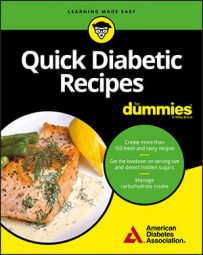However, when most people think of eating seafood, they probably picture battered, fried fish and shrimp or lobster soaked in melted butter. These kinds of seafood dishes are luxurious, but they can add a lot of unhealthy saturated fat to your diet. Try to avoid breaded and fried seafood and heavy sauces when choosing seafood options.
Baked Garlic Scampi
Preparation time: About 5 minutesCook time: 10 minutes
Servings: 4
Serving size: 3 ounces and 1/2 cup arugula
Ingredients
1 tablespoon extra-virgin olive oil1/4 teaspoon salt
7 garlic cloves, crushed
2 tablespoons chopped fresh parsley, divided
1 pound large shrimp, shelled (with tails left on) and deveined
Juice and zest of 1 lemon
2 cups baby arugula
Directions
- Preheat the oven to 350 degrees F. Grease a 13-x-9-x-2-inch baking pan with the olive oil. Add the salt, garlic, and 1 tablespoon of the parsley in a medium bowl; mix well and set aside.
- Arrange the shrimp in a single layer in the baking pan, and bake for 3 minutes, uncovered. Turn the shrimp, and sprinkle with the lemon peel, lemon juice, and the remaining 1 tablespoon of parsley. Continue to bake 1–2 minutes more until the shrimp are bright pink and tender.
- Remove the shrimp from the oven. Place the arugula on a serving platter, and top with the shrimp. Spoon the garlic mixture over the shrimp and arugula and serve.
If possible, use fresh (never frozen) shrimp or shrimp that are free of preservatives — for example, shrimp that have not been treated with salt or sodium tripolyphosphate (STPP).
Per serving: Choices/Exchanges 2 Lean Protein; Calories 110 (from Fat 30); Fat 3.5g (Saturated 0.5g, Trans 0.0g); Cholesterol 120mg; Sodium 220mg; Potassium 250mg; Total Carbohydrate 3g (Dietary Fiber 0g, Sugars 1g); Protein 16g; Phosphorus 165mg.Broiled Sole with Mustard Sauce
Preparation time: About 5 minutesCook time: 20 minutes
Servings: 6
Serving size: 3 ounces with sauce
Ingredients
Nonstick cooking spray1-1/2 pound fresh sole filets
3 tablespoons low-fat mayonnaise
2 tablespoons Dijon mustard
2 tablespoons chopped parsley
1/8 teaspoon freshly ground black pepper
1 large lemon, cut into wedges
Directions
- Preheat broiler. Coat a baking sheet with nonstick cooking spray. Arrange the filets so they don’t overlap.
- In a small bowl, combine the mayonnaise, mustard, parsley, and pepper, and mix thoroughly. Spread the mixture evenly over the filets. Broil 3–4 inches from the heat for 4 minutes until the fish flakes easily with a fork.
- Arrange the filets on a serving platter, garnish with lemon wedges, and serve.
Try this recipe over blanched broccoli or string beans.
Chicken and salmon fillets work well with this recipe, too.
Per serving: Exchanges 3 Lean Protein; Calories 120 (from Fat 20); Fat 2g (Saturated 0.4g, Trans 0.0g); Cholesterol 60 mg; Sodium 280mg; Potassium 330mg; Total Carbohydrate 2g (Dietary Fiber 0g, Sugars 1g); Protein 22g; Phosphorus 265mg.Flounder Parmesan
Preparation time: About 5 minutesCook time: 20 minutes
Servings: 4
Serving size: 3–4 ounces
Ingredients
1 tablespoon extra-virgin olive oilFour 4-ounce flounder filets
1 cup marinara sauce
1/4 cup freshly grated Parmigiano-Reggiano cheese
4 ounces skim milk mozzarella
Directions
- Preheat the oven to 375 degrees F. Grease a baking dish with the olive oil and place the fish filets on the dish.
- Pour the Marina Sauce over the fish. Top with the Parmigiano-Reggiano Cheese and mozzarella. Bake for 12–15 minutes, or until the fish is cooked through and the mozzarella is bubbly. Transfer to a platter and serve.

